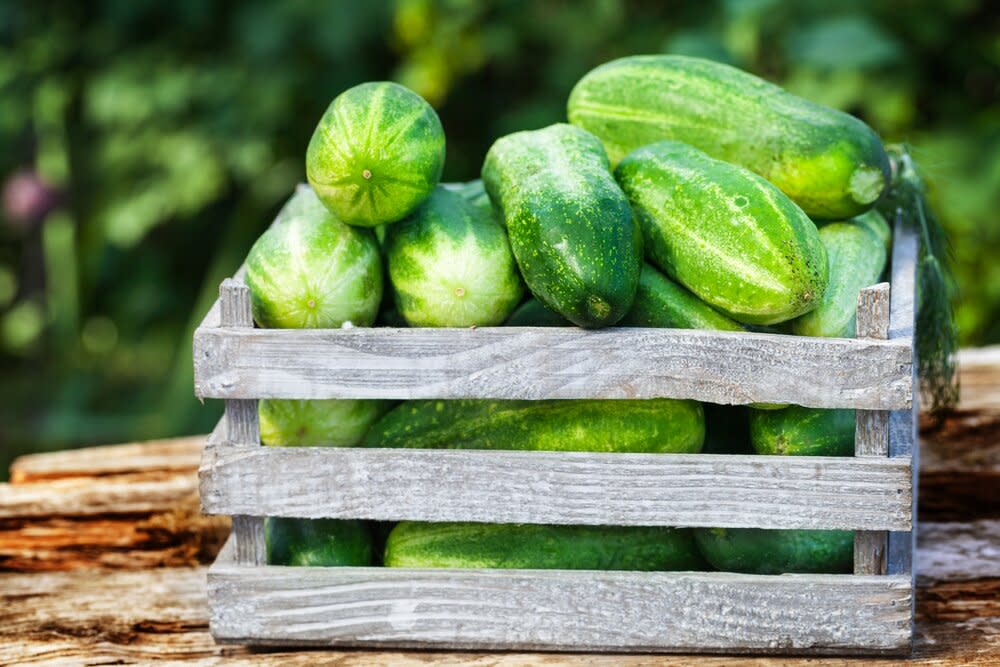Cucumbers, Food Poisoning & What You Need To Know

Shutterstock
UPDATE: As of Sept. 30, 2015, 113 more cases of food poisoning have been reported linked to tainted cucumbers, according to the CDC. Alabama was added to the list of affected states, bringing the total number of states with cases to 34. For more information, check out the CDC's complete update.
No doubt you've heard the scary news about a food poisoning outbreak linked to fresh cucumbers. More than 300 people were affected, including 70 who were hospitalized, and two who died. More than half of those infected were children.
The infections—occurring in at least 30 states—were traced to imported cucumbers sold in bulk bins that were contaminated with a strain of Salmonella. The company that distributes the cucumbers issued a recall. You can get more information from the CDC on whether the cucumbers at your store were involved.
Though this particular strain of Salmonella (called Salmonella Poona) is rare, Salmonella is a common and potentially dangerous source of foodborne illness. One in six Americans gets sick every year from food poisoning, and out of all the different kinds of organisms responsible, Salmonella is the number-one cause of hospitalizations and deaths. What's worse, children (especially those under the age of 5) are at highest risk for infection.
Salmonella is a kind of bacteria that lives in the intestines, and you can be infected with it if you eat foods contaminated with animal feces. Though foods from animals (like meat, poultry, and eggs) are typically the source, fruits and veggies can also become contaminated. You can also be infected if you handle animals or animal feces and don't wash your hands afterwards.
Infection from Salmonella typically causes diarrhea, fever, and abdominal cramps within 12-72 hours of ingesting it. People are usually sick for 4-7 days, and most get better on their own. But it can be serious for those who are very young, very old, or have weakened immune systems. In some cases, severe diarrhea can require hospitalization. Infection can also spread through the bloodstream, which can cause death.
Foods tainted by Salmonella usually look and smell normal. While there's no way to tell if produce is contaminated (though a new law may help keep consumers safer), there's a lot you can do at home to avoid Salmonella infection. Here are some tips from the CDC:
Cook all poultry, ground beef, and eggs thoroughly, which kills Salmonella. Don't eat or drink foods containing raw eggs or raw milk. Foods that contain raw eggs may include homemade mayo, raw cookie dough, and homemade Caesar salad dressing.
Wash hands, kitchen surfaces, and utensils with soap and water right away after they've been in contact with raw meat or poultry.
Be especially cautious with foods and drinks prepared for kids, the elderly, and those with weakened immune systems.
Wash hands with soap after handling animals and pets, especially reptiles, birds, and baby chicks, or after any contact with pet feces.
For more information about Salmonella, visit the CDC's information page.
Sally Kuzemchak, MS, RD, is a registered dietitian, educator, and mom of two who blogs at Real Mom Nutrition. You can follow her on Facebook, Twitter, Pinterest, and Instagram. She is the author of Cooking Light Dinnertime Survival Guide, a cookbook for busy families. In her spare time, she loads and unloads the dishwasher. Then loads it again.

